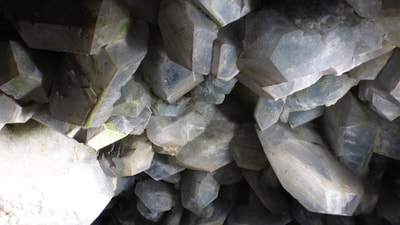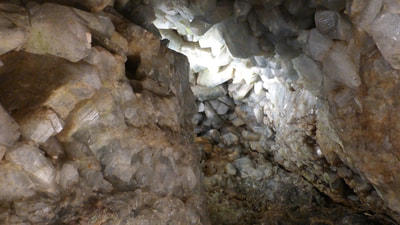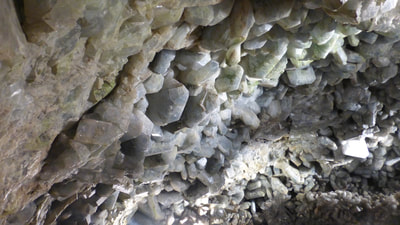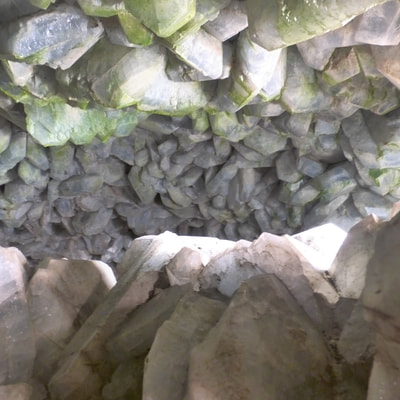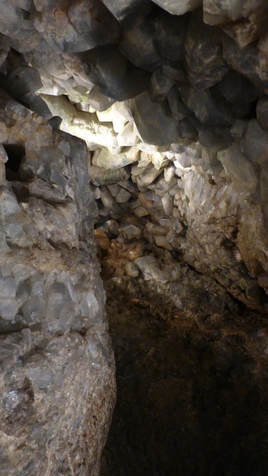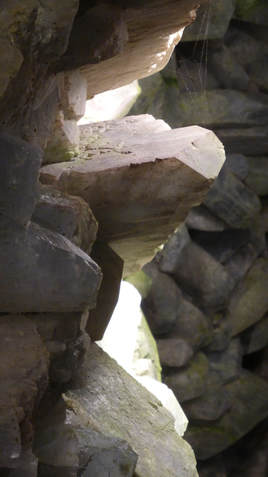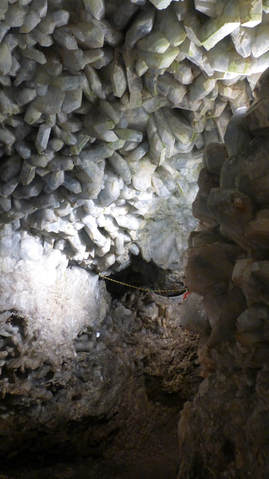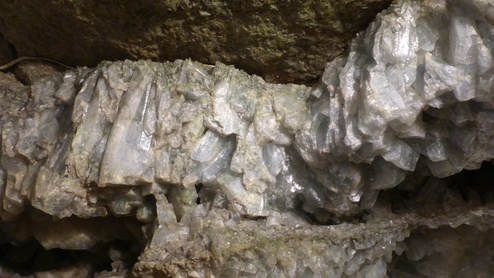This small cave is actually an enormous geode, a crystal-lined cavity in the solid limestone. The opaque, bluish crystals average several inches in length and width, and present a multitude of geometrically perfect reflective faces, sharp edges and points on the close, curved walls and ceiling.
Dimensions About a dozen people could comfortably crowd into this cave without pressing against the walls. The few connected short passages are 3-10 feet (1-3 m)wide, and 4-8 feet (1.2-2.5 m) high.
Key Details
- Like other geodes, the cave has no natural entrance – it was discovered when a well was being drilled into the limestone, and an artificial entrance was made.
- The encrusted walls are very rough and irregular. Crystals are copies of each other in shape, but have grown from the walls at random angles, some reaching inches further out into the room than their neighbors. Gaps between crystals form a number of small, hand-sized nooks and crannies.
- The cave floor is clear and level. Crystals are absent there, or have been buried in debris.
- At the end of one short passage, the walls close gradually together to become a jagged-edged slanting crevice.
- The crystals here are celestite: strontium sulfate. Powdered celestite is valued as an ingredient in fireworks, because it burns with a bright red flame. Some common minerals found in geodes elsewhere include quartz, calcite, pyrite (metallic gold crystals which can be used to make sulfuric acid), sphalerite (brown crystals, ore of zinc), barite (white, paint pigment), and opal.
- The numbers, sizes, and orientations of crystals on passage ceilings are exactly the same as on room walls. When the crystals were growing in this space, at that time entirely filled with water, gravity’s effect left no noticeable trace.
- In some spots near the entrance, bare limestone is exposed where the crystals were broken away and removed. At the edges of these bare spots, it can be seen that the crystal layer removed was more than a foot thick.
Story Elements
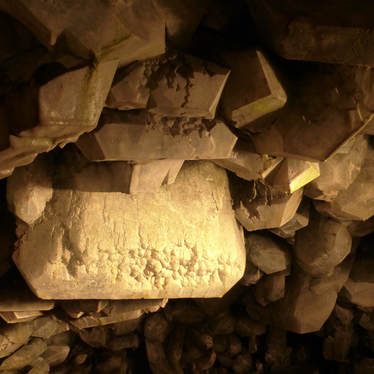
- This is a singular space, best associated with the peak of a story line such as the end of a quest, or the point of most significant peril.
- This cave the environment is so weird that it’s hard to believe it’s entirely natural. Does this place radiate special healing properties? Are crystalline beings about to detach themselves from the walls? Will the glassy crystal faces reveal images of the future? Is there a slight glow from crystals that have trapped the souls of earlier explorers?
- There could be a small-scale mining operation active here. (Another type of mineral crystal/coating could be substituted in the chamber’s description, to yield a more story-appropriate mineral product.)
- A bright-beamed flashlight brought into this darkened space would set off confusing, possibly momentarily blinding reflections from the crystal faces.
- Hidden among the riot of crystals might be an artifact or box, painted to have similar appearance.
- This would be a challenging environment to move through, if filled again with water. That could occur from accidental flooding or a gradual rise in groundwater levels.
- Wounds from falling or being thrown against the sharp crystal points would be distinctive, and could be recognized as signs of a person’s prior presence the cave.
- With tedious labor, someone might chip away crystal edges to further sharpen them, making the room a deadly trap.
- Someone left in total darkness, gingerly feeling a way along the room walls, might have the relief of encountering a bare rock spot, and realizing that the cave entrance must be nearby.
Reference Location
Crystal Cave, South Bass Island in Lake Erie, northern Ohio. The cave is protected beneath Heineman Winery, and can be viewed as part of a tour there.
© Rice-Snows 2017
Proudly powered by Weebly
